The National Register of Historic Places (NRHP) is the United States federal government's official list of districts, sites, buildings, structures and objects deemed worthy of preservation for their historical significance or "great artistic value". A property listed in the National Register, or located within a National Register Historic District, may qualify for tax incentives derived from the total value of expenses incurred in preserving the property.

President's Park, located in Downtown Washington, D.C., encompasses the White House and includes the Eisenhower Executive Office Building, the Treasury Building, and grounds; the White House Visitor Center; Lafayette Square; and The Ellipse. President's Park was the original name of Lafayette Square. The current President's Park is administered by the National Park Service. The park is officially referred to as President's Park or The White House and President's Park.
The History of the National Register of Historic Places began in 1966 when the United States government passed the National Historic Preservation Act (NHPA), which created the National Register of Historic Places (NRHP). Upon its inception, the U.S. National Park Service (NPS) became the lead agency for the Register. The Register has continued to grow through two reorganizations, one in the 1970s and one in 1980s and in 1978 the NRHP was completely transferred away from the National Park Service, it was again transmitted to the NPS in 1981.
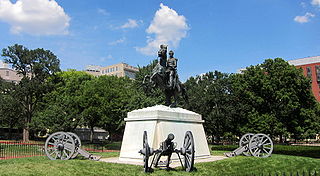
The Lafayette Square Historic District is a National Historic Landmark District in Washington, D.C., encompassing a portion of the original L'Enfant Plan for the city's core. It includes the 7-acre (2.8 ha) Lafayette Square portion of President's Park, all of the buildings facing it except the White House, and the buildings flanking the White House to the east and west. The district was designated a National Historic Landmark in 1970.

District of Columbia City Hall, also known as "Old City Hall" and the "District of Columbia Courthouse", is an historic building at Judiciary Square in downtown Washington, D.C. facing Indiana Avenue. Originally built for the offices of the government of the District of Columbia, the District's courthouse was subsequently used as a Federal courthouse, and was the scene of several notable criminal trials including those of three accused presidential assassins. The building was declared a National Historic Landmark in 1960. It now houses the District of Columbia Court of Appeals.

Riggs National Bank is a historic former headquarters of Riggs Bank, located at 1503–1505 Pennsylvania Avenue, Northwest, Washington, D.C., in the downtown Washington, D.C. neighborhood.

William Alfred Freret, Jr. ["Will Freret"] was an American architect. He served from 1887 to 1888 as head of the Office of the Supervising Architect, which oversaw construction of Federal buildings.
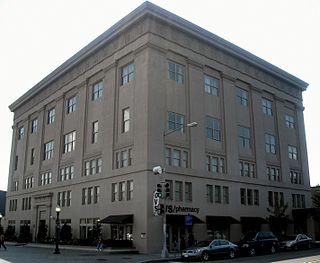
The Prince Hall Masonic Temple built in 1922 is an historic Prince Hall Masonic building located at 1000 U Street, NW in Washington, D.C. It is the headquarters of the Prince Hall Grand Lodge District of Columbia, and houses the MWPGM Roland D. Williams Center for Masonic Excellence. It is part of the Greater U Street Historic District.
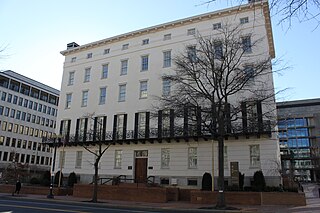
The Winder Building is an office building in Washington, D.C., just west of the White House. It is located at 604 17th Street, Northwest, Washington, D.C.

President's Office, George Washington University is a row of historic townhouses at 2003 G Street, Northwest, Washington, D.C., in the Foggy Bottom neighborhood. They are now part of The George Washington University Law School.
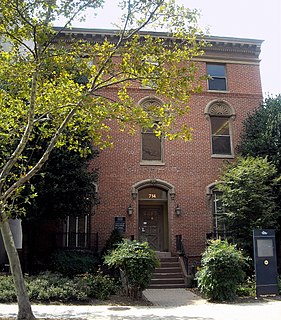
Margaret Wetzel House is a historic home at 714 21st Street, Northwest, Washington, D.C., in the Foggy Bottom neighborhood.
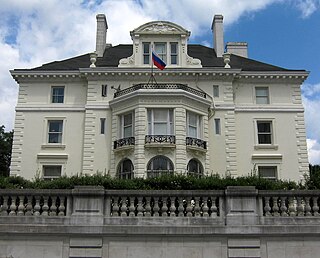
The Lothrop Mansion, also known as the Alvin Mason Lothrop House, is an historic home, located at 2001 Connecticut Avenue, Northwest, Washington, D.C., in the Kalorama neighborhood.

Quality Hill, also known as the John Thomson Mason House, is a historic building, located at 3425 Prospect Street, Northwest, Washington, D.C., in the Georgetown neighborhood.

The Dr. Franklin E. Kameny House in the Northwest Quadrant of Washington, D.C., is a two-story, brick Colonial Revival-style house built in 1955, with a screened porch and a one-car garage. It is significant for its association with gay rights activist Franklin E. Kameny (1925–2011), having served as his home and office, and as a headquarters for gay civil rights organizing.
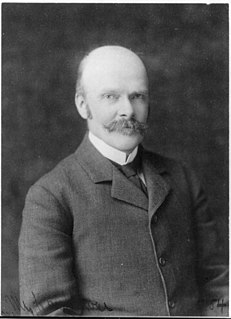
Hornblower & Marshall was a Washington, D.C.-based architectural firm that was a partnership between Joseph Coerten Hornblower (1848-1908) and James Rush Marshall (1851-1927). The firm designed numerous substantial government and other buildings, a number of which have been listed on the U.S. National Register of Historic Places.
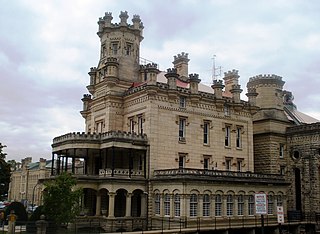
William Foster was an architect in Iowa.
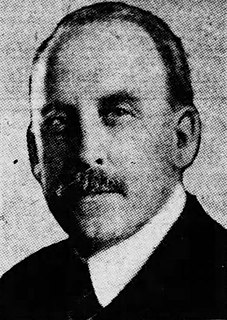
Albert L. Harris was an American architect who worked primarily in Washington, D.C. He was born in Wales and emigrated to the United States as a young child. He worked for architectural firms in Chicago and Baltimore and then Washington, where he also obtained an architectural degree from George Washington University. He was a part-time professor there while also working for the US Navy and then the city of Washington where he served as the city's Municipal Architect from 1921 until his death in 1933. A number of his works are listed on the National Register of Historic Places (NRHP).

The Freedman's Bank Building, previously known as the Treasury Annex, is a historic office building located on the corner of Madison Place and Pennsylvania Avenue NW in Washington, D.C. It sits on the east side of Lafayette Square, a public park on the north side of the White House, and across from the Treasury Building. The adjoining properties include the Howard T. Markey National Courts Building to the north and former Riggs National Bank to the east.



















